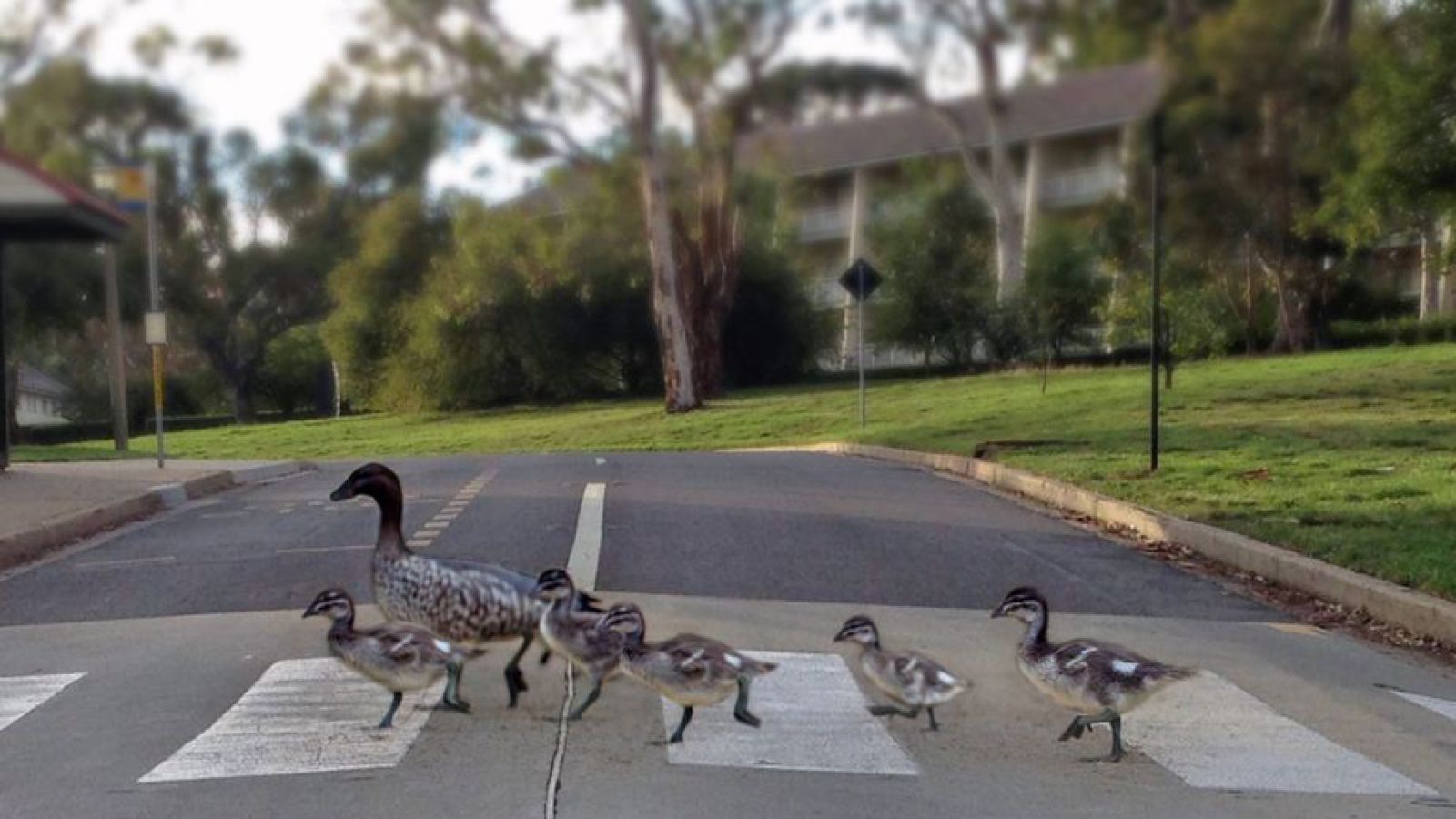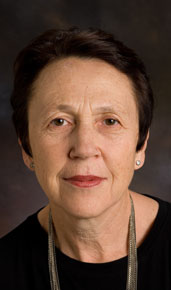Bridge on the River Memory

 by Simon Couper from the ANU Reporter
by Simon Couper from the ANU Reporter
After Anzac Cove and the Kokoda Track, the Thai-Burma Railway is one of the most important sites for the commemoration of Australian war history overseas. Thousands of tourists visit it each year and the Australian Government funds a memorial museum at Hellfire Pass cutting. But what do the people of Thailand make of this reverence for a part of their territory and fragment of their history? Thai and Australian students have gone some way to bridging that divide in a new project on cultural memory and war heritage.
Jungles are supposed to be steamy, vine-tangled affairs, but can they also be deciduous and ghostly?
These were the qualities that struck Professor Joan Beaumont (Director, Faculty of Arts, College of Arts & Social Sciences) the first time she visited the jungle around Konyu Cutting in Thailand, site of the infamous Hellfire Pass.
During World War II Japanese soldiers forced thousands of Allied prisoners of war (POWs) to chisel a rail passage through the obdurate rock as part of the Thai-Burma Railway.
The prisoners worked in pairs, one holding a long metal drill steady while the other pounded it with a mallet. Once they’d bashed out a deep enough cavity, the hole would be packed with dynamite and exploded. Little by little, the rock yielded down to the level of the desired track.
It was backbreaking work. The Japanese drove their labourers for up to 18 hours a shift, lighting massive bamboo fires after sunset so the work could continue into the night. It was the light of these flames and the shock of dynamite explosions that gave the site its name, but it was the toil and toll on the POWs that gave Hellfire Pass its legacy for Australians.
Beaumont, an ANU professor of war history whose work includes an interest in the memory of war, recalls her introduction to the cutting.
“The first time I went I was on my own,” she says. “The jungle in that part of Thailand is actually deciduous. The leaves float down from above the cutting. You can have a distinct sense of the presence of the dead there. If you’re there at night, it must be profoundly evocative.
”It must be quite a spectacle at Hellfire Pass during the Anzac Day dawn service too, when fires are lit in the pre-dawn dark while visitors hold a ceremony for those who lost their lives.
Tourists can still take the “Death Railway Tour” along part of the Thai-Burma Railway and contemplate the 13,000 POWs and perhaps 90 000 Asian labourers who perished during its construction.
They can also visit the Bridge on the River Kwai at Kanchanaburi– a steel construction quite different to the wooden one immortalised in David Lean’s 1957 movie.
Beaumont says this collision of fact and fiction, tribute and tourism points to a fundamental problem around the preservation of offshore commemorative sites – places like Anzac Cove and the Kokoda Track, which are iconic sites in Australian memory of war.
“You have sites of heritage value located in a sovereign nation that does not have as much investment in their preservation as do outsiders,” she says. “So we’ve been looking at the questions: What is the heritage value of the [Thai-Burma] railway? Can it, and how should it be preserved? And that leads us naturally to its different meaning for different national groups.
”Prior to taking up the role of Dean of the Faculty of Arts at ANU, Beaumont worked at Deakin University. There she helped lead a project that allowed Australian and Thai postgraduate students of cultural heritage to explore what their respective populations knew of the history of the Thai-Burma Railway, and what these different perspectives meant for the preservation of significant war sites. The project was supported by the Australia-Thailand Institute (ATI), a federally funded body that encourages links and cultural exchange between Australia and Thailand.
In 2007, Beaumont led a group of Australian students on a trip to Hellfire Pass and other railway sites so that they could evaluate the different ways in which their Thai peers thought about the building of the railway and its legacy.
Earlier this year a second cohort of Australian students visited the Pass with Beaumont, as part of a second ATI-funded project to write a book on contested memory. But this time around the Chulalongkorn University staff and students taking part also visited Australia to gain a better understanding of what the memory of war means to us.
The students were divided into pairs consisting of one Thai and one Australian each, and then assigned a site connected with the Thai-Burma Railway. They were encouraged to explore its history and contemporary relevance to visitors and locals alike. In addition to Hellfire Pass and the Kwai River bridge, the students considered the Wang Pho viaduct and the two major Commonwealth War Graves Commission (CWGC) cemeteries in Kanchanaburi, plus a local Chinese cemetery where many Asian labourers who worked on the railway are interred.
Beaumont says that Thai attitudes towards WWII and the commemoration of the dead differ markedly from Australian approaches, so the Western drive to create war museums and maintain immaculate wartime cemeteries leaves many Thais baffled.
“When we first turned up in Thailand, I think the Thai students struggled to understand why the railway mattered to us. Why do Australians think this episode over sixty years ago continues to have such importance and relevance?
”The historian recalls one of the Thai students asking why anyone would exhume bodies from burial sites in the jungle and then reinter them in another cemetery in Kanchanaburi. In Thailand it is common for the dead to be cremated . The emphasis is placed on the deceased’s sprit rather than the location of the body.
“They questioned what we assumed was a natural and valuable commemorative practice [interring the dead in the CWGC cemeteries]. The British tradition is to honour the individual who dies in war by giving each man his own identifiable grave. It’s part of the citizenship contract in a democracy between the state and the individual who is willing to die in the nation’s defence. These cemeteries are also places where families return to commemorate their dead relative. All that the Thais saw was a strange, macabre practice. So that was an intriguing moment of cross-cultural understanding.
”This sentiment is reinforced by Yuttachai Boongthong, or Chalie, a Thai tour operator who is studying a degree in cultural management at Chulalongkorn University.
Chalie worked on the bridge over the River Kwai component of the project.
“I have learnt the history of the Second World War from Thai view and the damage and loss of Thai people during war, especially when the Japanese attacked Thailand in 1941,” Chalie says.
“I learned the difficulties of Thais during war when the Allies attacked Bangkok in different districts and caused loss of lives in the city. However, I did not know much about the lives of POWs and Asian labourers during the war, including Australians. What we learn [about WWII] is that we live our life as usual, but I feel as if two people are fighting in my house and don’t listen to what the owner of the house is saying to them.
“After the war ended, I felt a little bit bitter when the British asked the Thai government to pay money and export rice as a war pension, while they ask the Australian government for a place to commemorate the deaths.
”Chalie says that his own view is that relations between Australia and Thailand since the end of the Second World War have been good, but he thinks that many of his compatriots would be confused by sites like the war cemeteries in Kanchanaburi or the museum at Hellfire Pass.
He valued the opportunity to visit Australian places of war commemoration, including the Australian War Memorial, Cowra POW camp site and the Anzac Day dawn service and march in Melbourne.
He was impressed by the number of memorials to war that exist in Australia and formed the view that these play an important role in defining a sense of Australian nationhood.
He also remarked on the number of younger people who took part in the Anzac Day rituals, saying that the memory of war could be used as one component in an evolving Australian national identity.
“There are many reasons why people look at war differently — different culture is one,” Chalie says. “In the case of River Kwai, blaming certain groups of people for the way they think about wars and [how they are] looking at the past wars would probably be unfair for them. On the other hand, it should be a mission of each nation to learn, and to seek to benefit from war as a lesson for the society.
”Chalie was paired with Australian student Talitha Robinson, who has recently completed a Masters of Cultural Heritage and is now working on a chapter for the book arising from the project.
“Places that become what we might call ‘sites of memory’ often have a very strong sense of place where the landscape tells the story.
”Before taking part in the cultural exchange, Robinson says her knowledge of the history behind the Thai-Burma Railway was limited.
“I think this was largely due to the fact my secondary education history lessons focussed more on Australia’s role in the European theatres of war and less on the Asia Pacific. I had some knowledge of the fall of Singapore and the Kokoda Trail because my grandfather was stationed in Papua New Guinea during the Second World War.
“[After the project] I wouldn’t say my views changed but rather were expanded. During the initial phase of our research I was a little incredulous of how benign the Thai perspective or acknowledgment of the sites along the railway appeared to be. As our research developed and friendships formed, it was fantastic to understand the broad perspective of both eastern and western cultures.
“It is a wonderful opportunity to have the chance to work with a peer from another country on a common project. Undoubtedly it is most positive to work in both Australia and Thailand together. The language gap is sometimes challenging when trying to convey a lot of cultural intricacies we take for granted. I think my partner and all our Thai colleagues have done a wonderful job conveying their knowledge in a language that is not their own.
”For her own part, Beaumont says that the interactions between the Thai and Australian students were gratifying, as were the way in which the research helped to address some wider questions about Australian heritage sites in other countries.
She says that, although she takes issue with how the memory of war can be appropriated by governments to legitimise contemporary agendas, there is definitely a place in Australian culture for remembering past conflicts and atrocities.
“I think we are unduly fixated [on war],” Beaumont says. “Yet the exercise of confronting difficult issues from the past in order to move forward in the present is a worthwhile exercise.
”The act of visiting sites of former death and suffering can also help people confront the extremes of human behaviour, and their consequences.
“Places that become what we might call ‘sites of memory’ often have a very strong sense of place where the landscape tells the story,” Beaumont says.
“The cutting at Hellfire Pass does this because it is so deep. You stand there and imagine the huge physical effort it took to develop it. You can still see in the rock face evidence of the construction of the cutting.
”A record in rock, in a railway, in a river bridge. What they mean for Australians, Thais and others in future could depend on the kinds of conversations between different peoples that take place today.